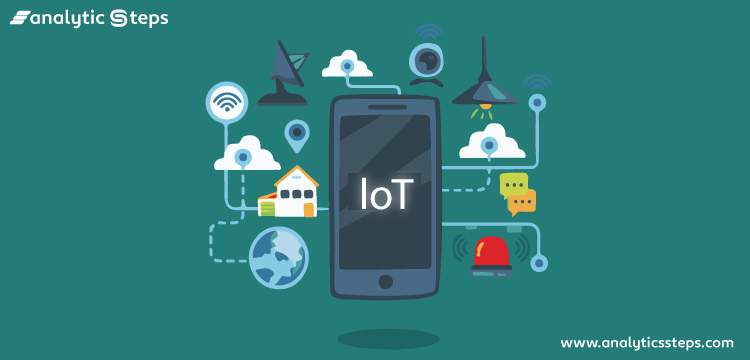Security Risks In Smart Homes: Internet of Things (IoT)
In the not-so-distant past, the idea of everyday objects being interconnected and able to communicate with each other would have sounded like science fiction. However, today, this concept is a thriving reality known as the Internet of Things, or IoT for short. IoT is a technological revolution that has been steadily transforming our world, blurring the lines between the digital and physical realms.
At its core, IoT is a network of connected devices, appliances, and objects that exchange data and information over the internet. These "smart" devices are embedded with sensors, software, and connectivity features, enabling them to collect and transmit data, receive commands, and even make autonomous decisions. The result is a web of interlinked devices that work harmoniously to enhance our lives in numerous ways.
IoT has permeated nearly every aspect of modern life, from our homes and workplaces to industries such as healthcare, transportation, agriculture, and manufacturing. Whether it's a thermostat that learns your temperature preferences, a wearable fitness tracker that monitors your health, or a fleet of trucks that optimize their routes in real-time, IoT has become an integral part of our daily existence, making processes more efficient, enabling better decision-making, and enhancing our overall quality of life.
As the IoT ecosystem continues to expand, it brings with it a world of possibilities and challenges. On one hand, IoT has the potential to revolutionize industries, mitigate environmental issues, and improve the way we live and work. On the other hand, it raises concerns about privacy, security, and the ethical use of data.
In this era of rapid technological advancement, understanding the Internet of Things is not just a matter of curiosity; it's an essential aspect of being a connected citizen of the digital age. In the pages that follow, we will explore the various facets of IoT, its applications, benefits, and the considerations that come with this transformative technology. Welcome to the world of the Internet of Things, where the future is already here.
Security risks in smart homes are a critical concern, as the proliferation of Internet of Things (IoT) devices has introduced new vulnerabilities. Here are some of the key security risks in smart homes:
Insecure Devices: Many IoT devices ship with default usernames and passwords, often well-known and easily guessable by attackers. Failure to change these defaults can leave devices vulnerable to hacking.
Outdated Firmware: Manufacturers may not release regular firmware updates or provide support for older devices. This leaves smart devices with unpatched security vulnerabilities, making them attractive targets.
Privacy Concerns: Some IoT devices collect sensitive data, such as audio or video footage. If these devices are compromised, it could lead to a breach of personal privacy.
Interconnected Devices: Smart homes are interconnected ecosystems, and if one device is compromised, it can potentially provide a pathway for attackers to access other devices on the network.
Weak Encryption: Inadequate encryption can make it easier for cybercriminals to intercept communications between devices or gain unauthorized access to smart home systems.
Lack of Security Standards: The IoT industry lacks universal security standards, leading to variations in security practices among manufacturers. Some devices may prioritize features and ease of use over security.
Unauthorized Access: Weak passwords or insufficient access controls can allow unauthorized users to gain control of smart home devices, potentially enabling them to disrupt or manipulate household systems.
IoT Botnets: Compromised IoT devices can be recruited into botnets, which can be used to launch Distributed Denial of Service (DDoS) attacks or engage in other malicious activities.
Vendor Reliability: Some IoT device manufacturers may not have strong security practices or long-term support for their products. This can lead to devices becoming insecure over time.
Physical Security: Physical access to devices, such as smart locks or cameras, can be exploited if devices are not adequately protected.
To mitigate these risks and enhance the security of a smart home, homeowners should:
- Change default passwords to strong, unique ones for each device.
- Keep firmware and software up to date by regularly checking for updates from manufacturers.
- Segment the network to isolate IoT devices from critical systems.
- Use strong Wi-Fi encryption (WPA3) and secure Wi-Fi passwords.
- Review and adjust privacy settings on devices to limit data collection.
- Enable monitoring and alerts for unusual device activity.
- Consider the use of network security solutions designed for IoT devices.
- Regularly audit and remove unused devices from the network.
By addressing these security risks and taking proactive measures, homeowners can enjoy the benefits of a smart home while minimizing the potential security vulnerabilities.
Securing your smart home is paramount in today's interconnected world. While the Internet of Things (IoT) brings convenience and automation to our daily lives, it also introduces security risks that must not be underestimated.
In this article, we've explored the various security risks associated with smart homes, from insecure devices with default passwords to outdated firmware and privacy concerns. We've learned about the potential for unauthorized access, the lack of universal security standards in the IoT industry, and the risk of devices being recruited into botnets.
However, the good news is that with awareness and proactive measures, these risks can be mitigated. By changing default passwords, keeping firmware up to date, segmenting your network, using strong Wi-Fi encryption, and reviewing privacy settings, you can significantly enhance the security of your smart home.
Furthermore, the importance of regular monitoring and auditing of devices cannot be overstated. Detecting unusual activity early can prevent security breaches and keep your smart home systems safe.
In conclusion, while smart homes offer incredible convenience and innovation, security should always be a top priority. By following the best practices outlined in this article, you can enjoy the benefits of a connected home while minimizing the associated security vulnerabilities. Stay informed, stay vigilant, and embrace the future of smart living responsibly. Your peace of mind and personal security depend on it.




Comments
Post a Comment